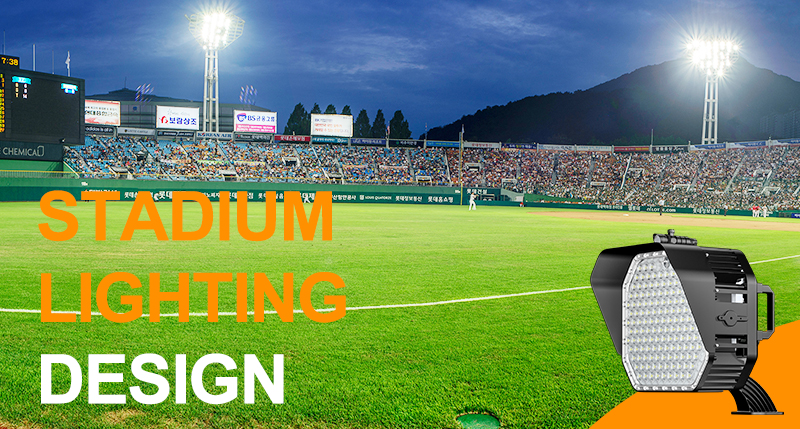
This article focuses on the stadium lighting design specifications received by UEFA and the latest technologies to be considered. These recommendations are designed to help technology vendors meet these requirements. They also considered the latest technological developments and broadcast needs to support stadium owners who wish to install a high-quality system that should be customized according to the current and expected future broadcast environment and UEFA's competitive requirements.
Provides guidelines for the artificial illuminance systems used for football pitches. The principles applied to the design elements and how you apply these principles and combine them together in one design will determine how successful your design is. The following main points should be considered and applied when designing a new pitch illuminance system or making alterations to an existing system
1. It is essential that players’ comfort and performance are not hindered by the pitch illuminance system.
2. The ability of match officials to perform effectively should not be hindered by the pitch illuminance system.
3. A spectator should be able to watch and enjoy the match without suffering any discomfort caused by the pitch illuminance system.
4. The pitch illuminance system should provide a level of illuminance that enables television broadcasters to operate effectively, in line with the requirements set out for the relevant UEFA illuminance level.
5. The relevant level of UEFA competition must be considered when assessing a stadium’s needs.
6. A successful pitch illuminance system will produce illuminance levels and uniformity that comply with the requirements of the relevant UEFA illuminance level, with soft shadows where possible.
7. The pitch illuminance system must be reliable and effective for the given location. The specific conditions that are relevant for the stadium location should be carefully assessed.
8. The pitch illuminance system should provide a long-term solution that is both efficient and costeffective.
9. The environmental impact of a pitch illuminance design solution should be carefully assessed. The design team should be committed to achieving an environmentally responsible solution.
10. Every sports stadium is unique. Consequently, each stadium will require a design solution that is appropriate for the relevant stadium and illuminance level.
11. The stadium’s infrastructure and design will have a significant impact on the type of pitch illuminance system that can be applied. A four-corner tower/column system will not generally meet requirements for illuminance level A stadiums.
12. Modern artificial lighting systems are able to provide high-quality illuminance conditions on the pitch and may potentially be integrated into the architectural design of the stadium.
13. The artificial lighting system may also be used to create lighting effects for stadium events and pre/post-match lighting effects.
14. A stadium lighting design should always take account of the latest technological requirements for broadcast television.
15. A stadium lighting design should always assess the lighting equipment and technology that is available and consider if it is appropriate for the desired lighting solution.
It is essential to ascertain the level of competition that the stadium is intended to be used for. The pitch illuminance system should be designed to meet the requirements of the relevant illuminance level. An illuminance system that operates to a higher specification than is necessary may be unduly expensive to install and operate. In some situations, it may even be considered inappropriate given the stadium’s size and location. However, it is also important that the design process gives due consideration to long-term aspirations in terms of the intended use of the stadium. In some cases, it may be preferable to comply with the requirements of a higher illuminance level to allow for future development.
During the design process for new stadiums, this guide should be used for guidance to determine the level of illuminance that is required. Once the installation of the illuminance system (i.e. floodlights) has been completed, an illuminance test report should be submitted for analysis.
Existing stadiums may want to evaluate their current illuminance system and ascertain how to meet the standards required for the relevant level of competition.
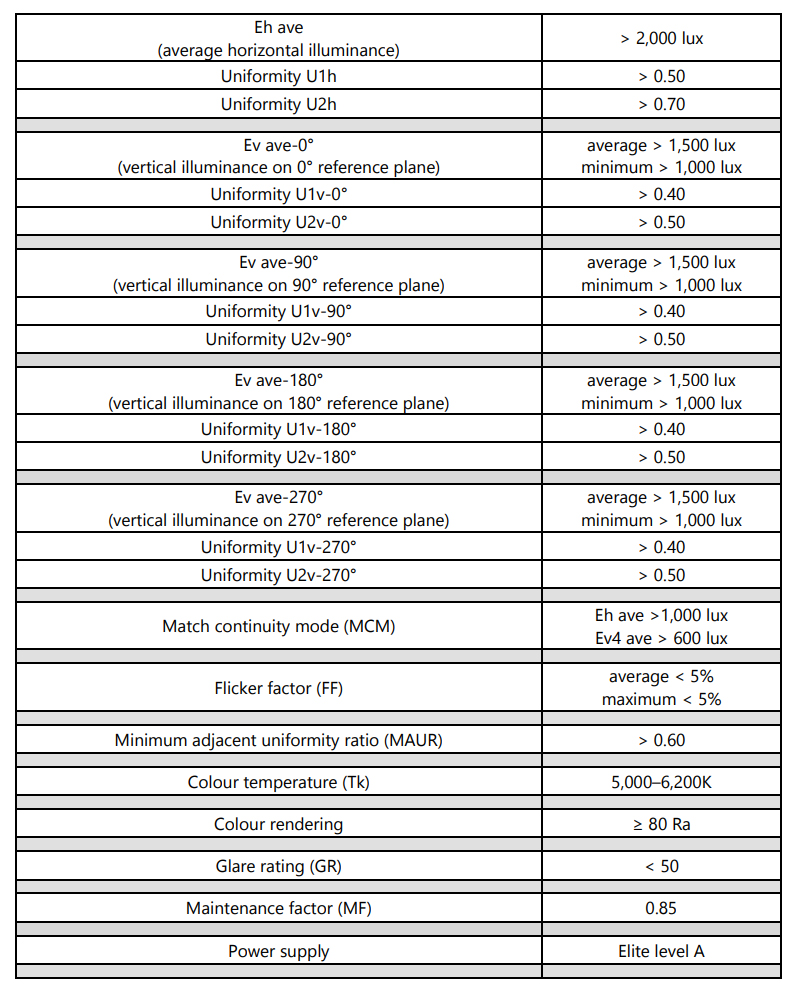
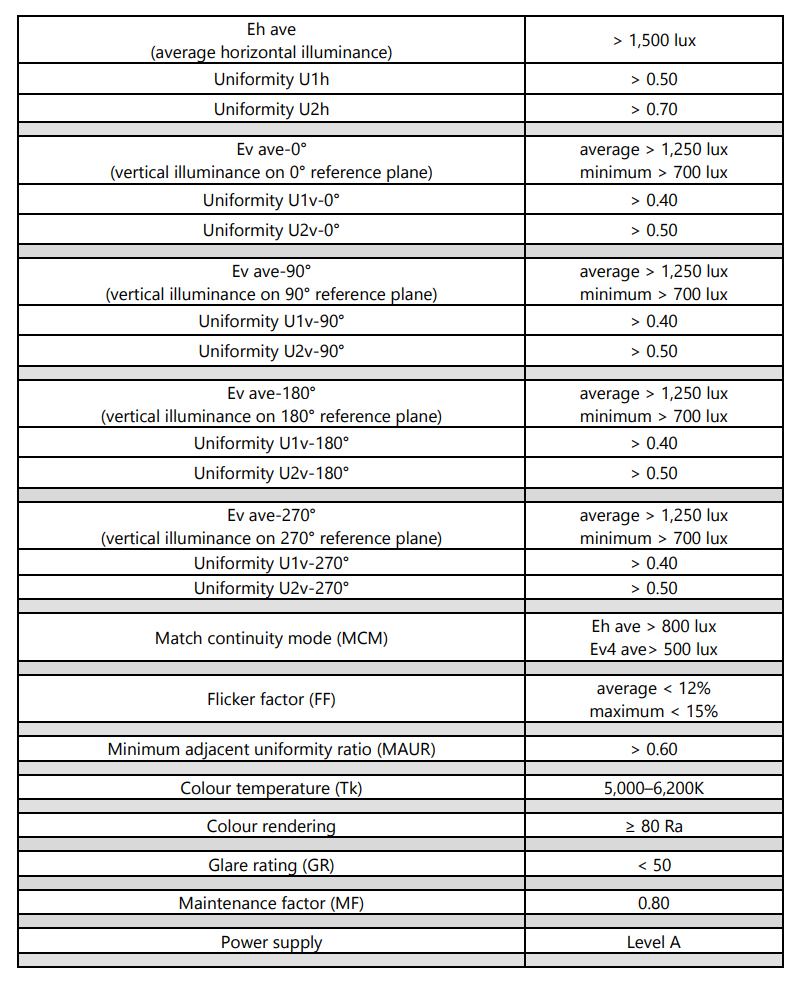
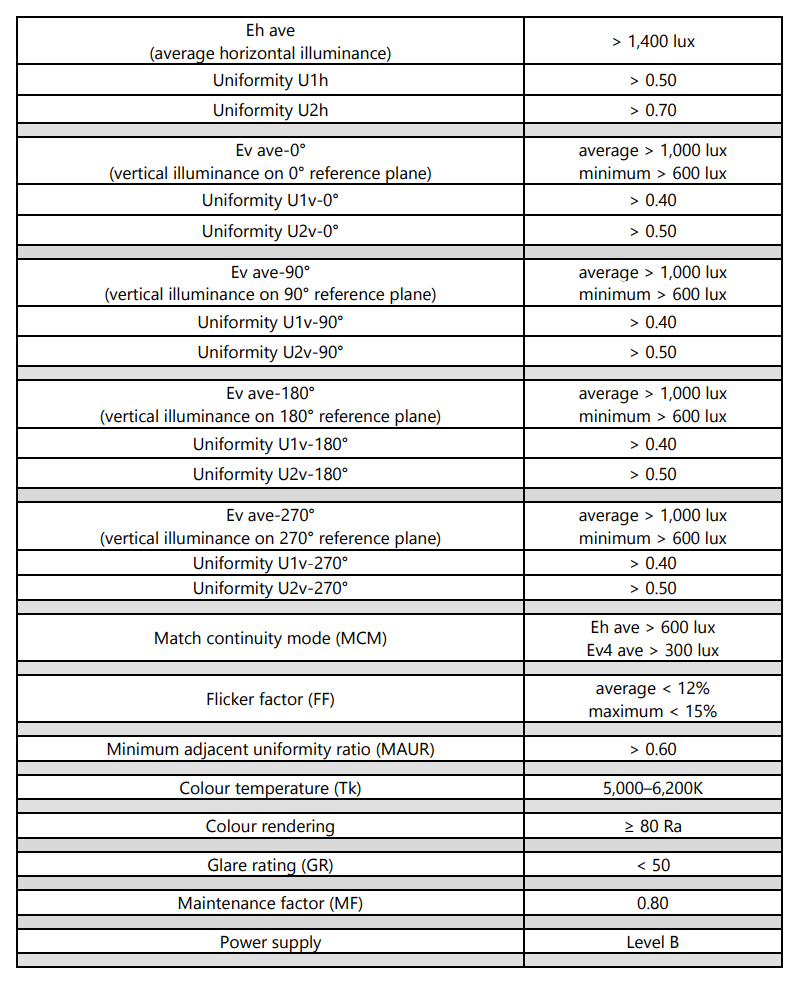
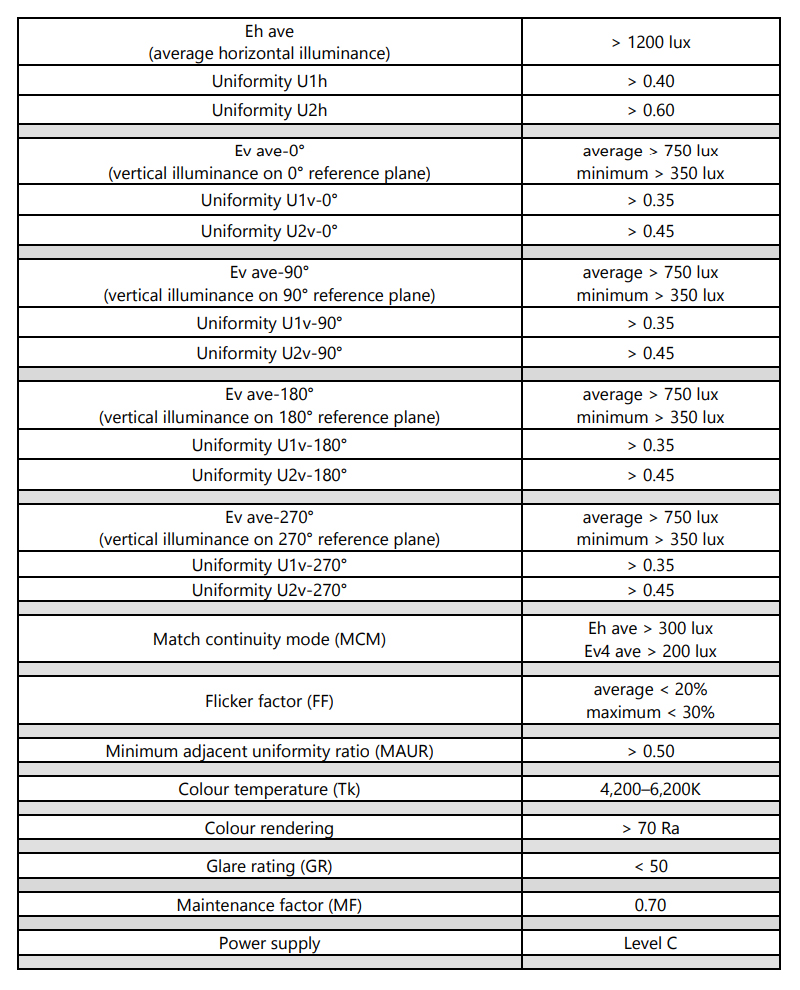
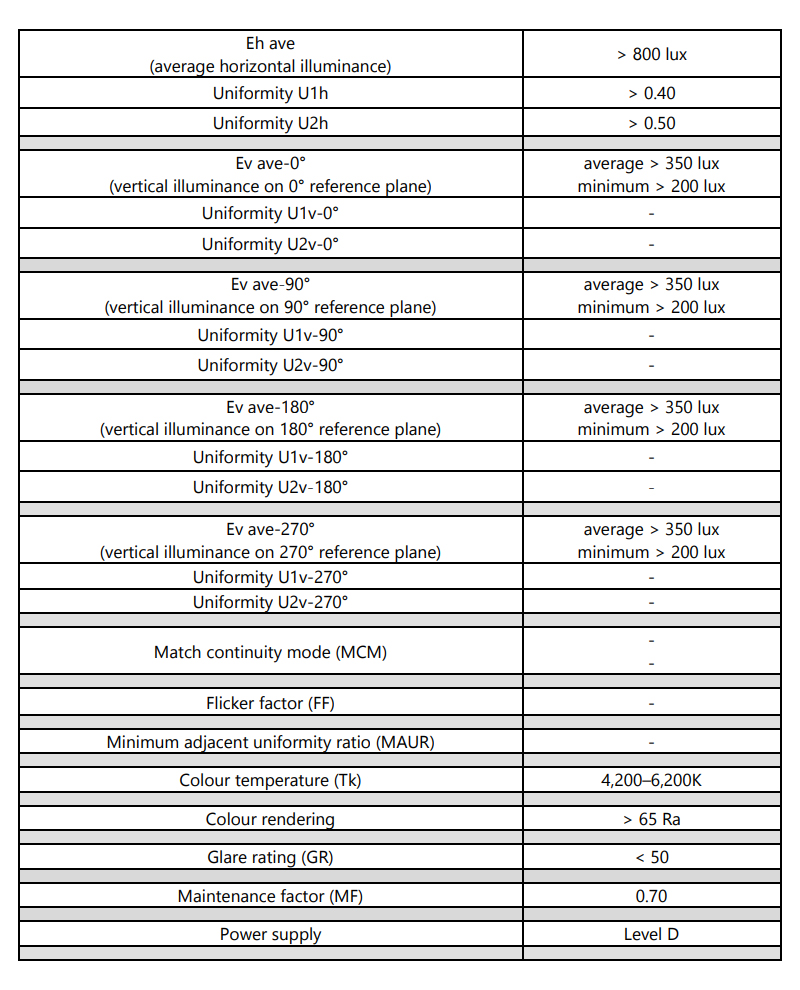
The stadium illumination system should provide the best conditions within the given illumination range to ensure that athletes, officials, spectators and broadcasters can perform and enjoy the game without barriers.
During the design process, the following guidelines should be used to establish a high-quality pitch illuminance system that meets the relevant UEFA illuminance level requirements.
The first thing to consider is to provide the best performance conditions for athletes and officials. During the game, the illumination system should not distract or obstruct players or officials.
The illumination system should provide the audience with a comfortable, glare-free environment and allow them to clearly see the game.
Television broadcasters need certain illumination conditions to produce high-quality images. The minimum illumination level required for a specific game.
The position of the floodlight has a great influence on the elevation illuminance conditions. This is one of the main issues when evaluating the design process. The installation position of the lamp will directly affect the level and uniformity of the pitch illumination of all planes. The installation location will also affect the generation of shadows of athletes and the visual comfort of athletes, officials and spectators.
In recent years, architectural requirements and design aesthetics have challenged previous illuminance design guidelines. The design and construction of new stadiums usually require the stadium lighting system to meet the required standards, while also meeting the requirements of architectural design. Now, many stadiums in Europe have stadium lighting systems that do not meet the previous guidelines, but they do provide good lighting conditions.
It is recommended that all new pitch illuminance designs focus on ensuring that the player’s comfort is maintained. The design solution should ensure the comfort of athletes, officials and spectators while providing good operating conditions for broadcast and television. Any new spacing illuminance design/concept that meets other spacing illuminance requirements while meeting this requirement will be welcomed.
Glare is the sensation produced by the brightness in the visual field, which is more accustomed to causing annoyance, discomfort and/or impaired vision and visual performance than the eyes.
Uncomfortable glare is caused by direct glare from lamps that are too bright, insufficiently shielded or too high
The size is large. This is also caused by specular glare from other light sources (in the stadium). It may be the sun). When the eyes are accustomed to darkness, they are particularly vulnerable to damage and depression. The central field of view when bright light enters the field of view.
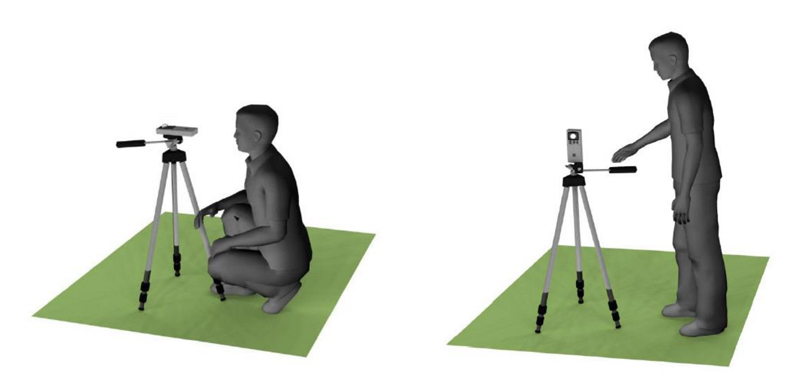
The lower the glare level, the better the glare situation.
The effectiveness of the system is limited to the viewing direction below the line of sight, and is mainly used to predict the degree of glare. In the lighting design stage, glare evaluation according to CIE 112-1994 should be carried out. It should start at 0° or 180° and evaluate every 15° for a total of 360°. The observer position should be 1.75m above the surface of the court. For each observer position, the maximum glare level and corresponding direction should be displayed.
During the broadcast, we can often see that certain illumination systems will cause image flicker during slow-motion playback. Flicker is distracting and harms the viewer’s experience, so flicker should be eliminated may.
The ballast in the illuminance flicker lighting system is usually eliminated by installing an electronically controlled ballast or a square wave form. This technology can usually also be added to an existing installation and can be used for a new installation.
‘Colour temperature’ describes the feeling or appearance of how warm (red) or cool (blue) a certain type of illumination appears to be. It is measured in kelvins (K).
Digital camera technology allows video-produced media to be altered to ‘gain’ colour and contrast, as required to produce the desired colour quality. The required colour temperature range varies depending on the stadium illuminance level, with the minimum and maximum levels across all levels being 4,200K and 6,200K respectively.
It is often necessary to start the broadcasting of a football match in daylight and finish with all the pitch illuminance provided by the floodlighting system. On these occasions, the artificial lighting should generally be used at the beginning of the broadcast to allow a gradual change from daylight to artificial illuminance. During this period, the broadcast engineers will be able to make minor adjustments to the camera settings as required.
The diagram below provides a guide to the colour temperature range required for UEFA stadiums.
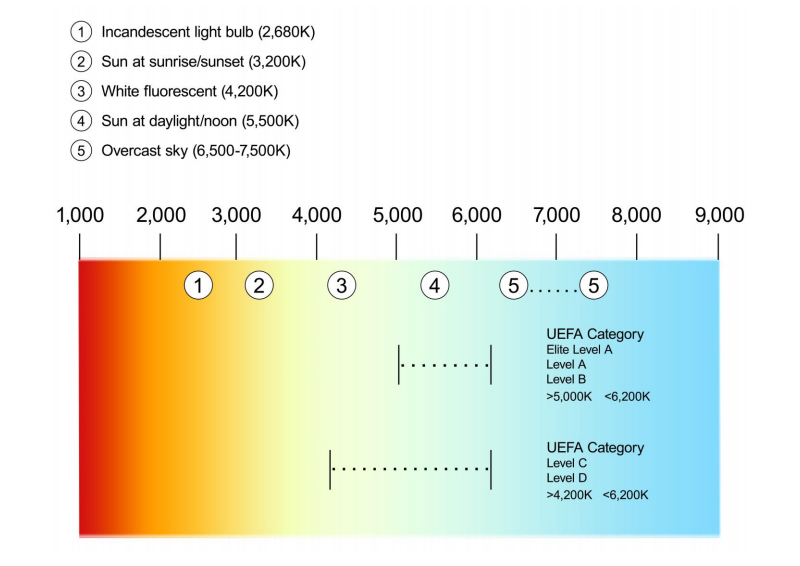
Colour rendering, which is expressed as a score between 0 and 100 Ra on the Colour Rendering Index (CRI), describes how a light source makes the colour of an object appear to human eyes and how well subtle variations in colour shades are revealed. The higher the CRI rating, the better the colour rendering.
UEFA’s requirements stipulate that for good colour production by the artificial illumination system, the CRI rating needs to be ≥ 80 for level A and level B stadiums, ≥ 70 for level C stadiums and ≥ 65 for level D stadiums.
Artificial shadows on the pitch caused by floodlighting systems detract from visual clarity for both spectators and television broadcasters. The shadows impinge upon the viewing experience and should be eliminated where possible or reduced to soft shadows.
During the pitch illuminance design process, it is important to evaluate the production of player shadows and eliminate any hard shadows. This will generally be done by using multiple light sources from various locations for each area of the pitch. This will mean that shadows are reduced and players will benefit from good illuminance modelling around their entire bodies. This will be essential to provide the adequate vertical illuminance and uniformity on all planes.
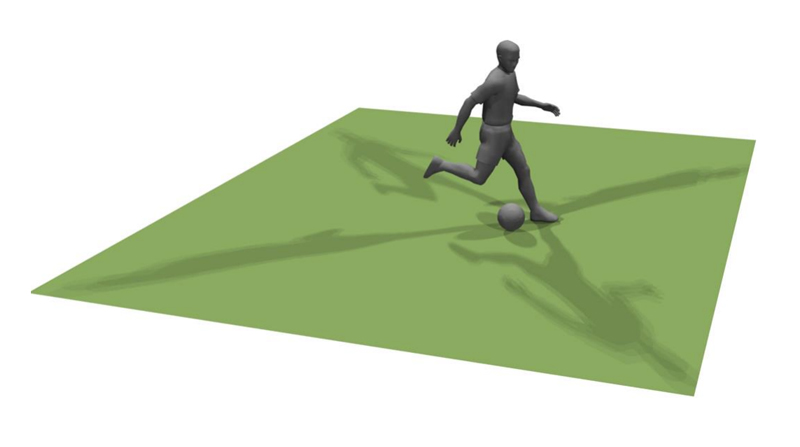
The image above demonstrates the impact of player shadows on a football pitch.
In some stadiums, the existing infrastructure will mean that a four-corner tower/column floodlighting system is the only viable option in terms of the pitch lighting design. Corner tower illuminance systems will generally produce hard shadows, which will vary in different areas of the pitch. With this type of installation, it is not possible to produce consistently soft shadows
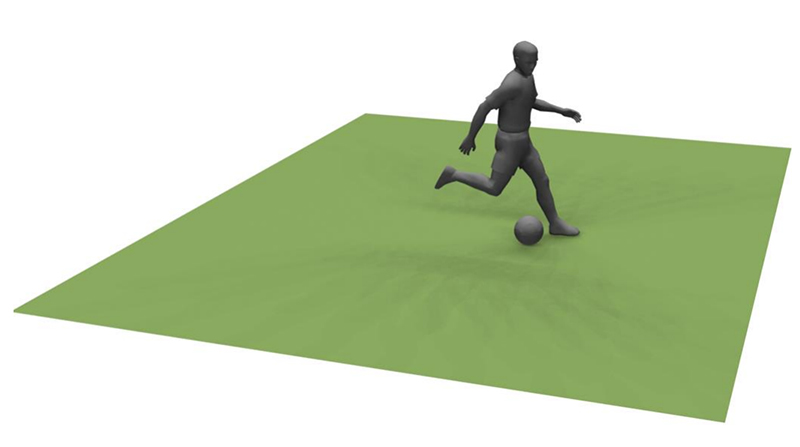
The image above is an example of the soft shadows created by an effective solution involving multiple light sources from different locations.
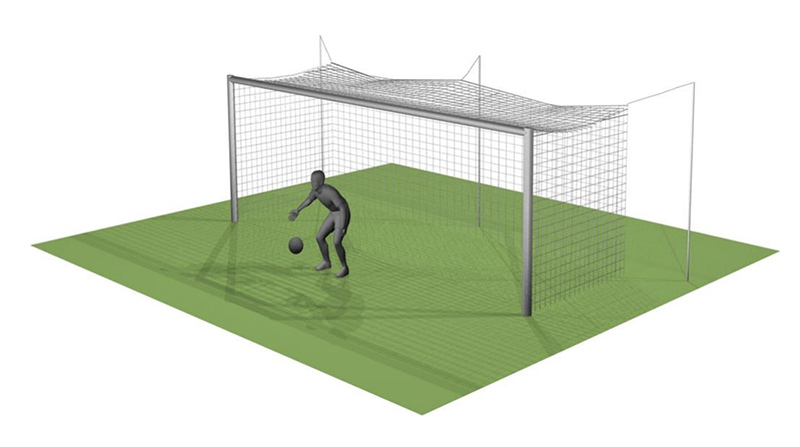
The image above is an example of hard shadows in the goal area. Shadows should be reduced where possible, while ensuring that players are not hindered by discomfort glare.
It is important that people designing lighting systems for football stadiums understand the requirements of television cameras and the positions that they operate from. Below is a typical camera plan for a highspecification TV broadcast of a football match:
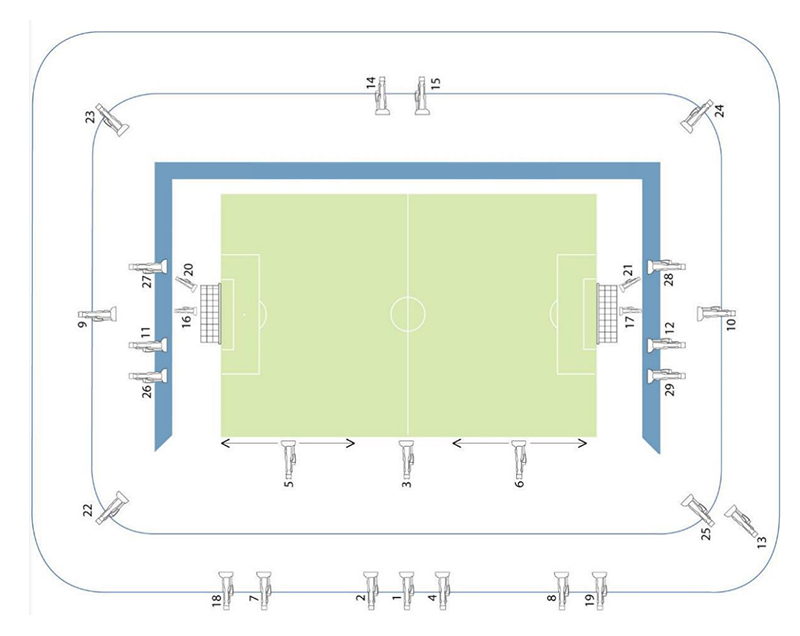
That camera plan is fairly typical, but some broadcasters and TV directors will deviate from it slightly. The purpose of the plan is to help you understand how the different elements of the lighting design should be used to ensure the correct illuminance conditions in all areas of the pitch.
1 MAIN CAMERA
2 CLOSE-UP CAMERA
3 PITCHSIDE HALFWAY CAMERA
4 CLOSE-UP CAMERA
5-6 STEADICAMS
7-8 22-YARD CAMERAS
9-10 HIGH-BEHIND-GOAL CAMERAS
11-12 LOW-BEHIND-GOAL CAMERAS
13 BEAUTY SHOT CAMERA
14-15 REVERSE ANGLE CAMERAS
16-17 MINI-CAMERAS
18-19 GOAL LINE CAMERAS
20-21 HOT HEAD CAMERAS
22-25 CORNER CAMERAS
26-29 HI-MOTION OR BIG LENS CLOSE-UP CAMERAS
The camera plan above does not show the cameras used for presentation/interview and analysis purposes, which are not relevant for this document.
Conclusion
The stadium is a huge outdoor building with a long history. After it is completed, it can show football matches to everyone as much as possible. The football field is not just a game, but the whole sport attracts people's body and mind in a spectacular way. The lighting of the stadium is very challenging. For this reason, before purchasing lighting equipment, we will follow the stadium lighting standards and specifications for a comprehensive photometric design. There are amazing stadiums all over the world. They are widely known for their architecture, ground, atmosphere and overall capacity. Lighting is always an essential part.
Please feel free to send us a message to get free lighting opinions and designs.
Author 2025-06-12
Hishine Group Limited Will Meet Customers In Mexico City.Hishine is thrilled to announce its participation in Expo Eléctrica International 2025, Latin America’s premier trade fair for power and lighti...
Author 2025-05-12
Our recent business trip to Saudi Arabia proved to be a pivotal step in strengthening partnerships and exploring opportunities in the Kingdom’s rapidly growing energy and lighting markets. Below are t...